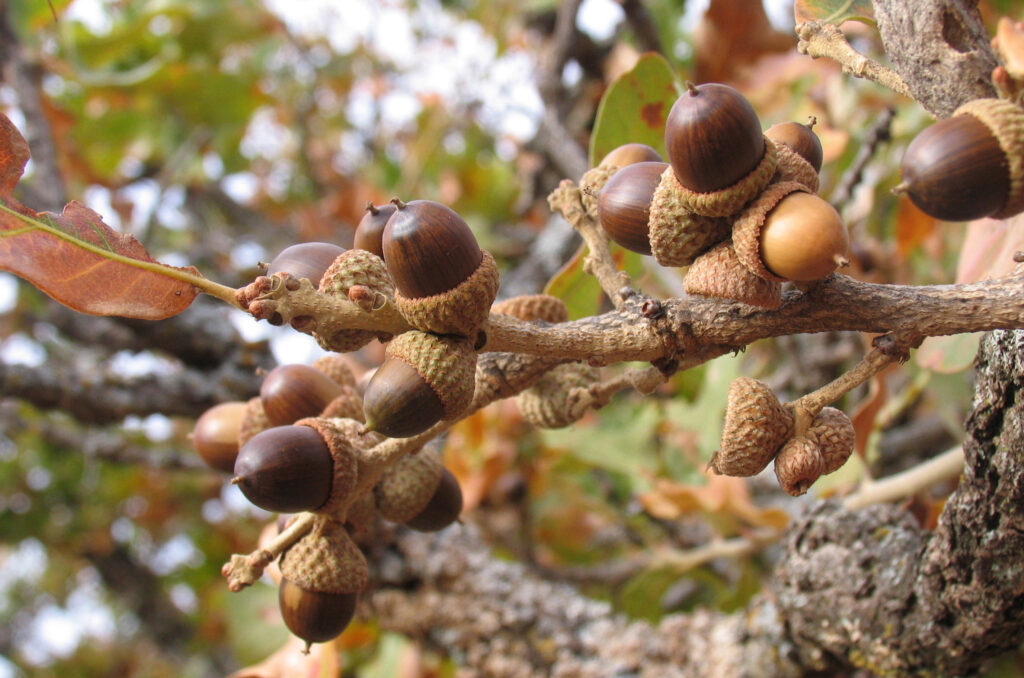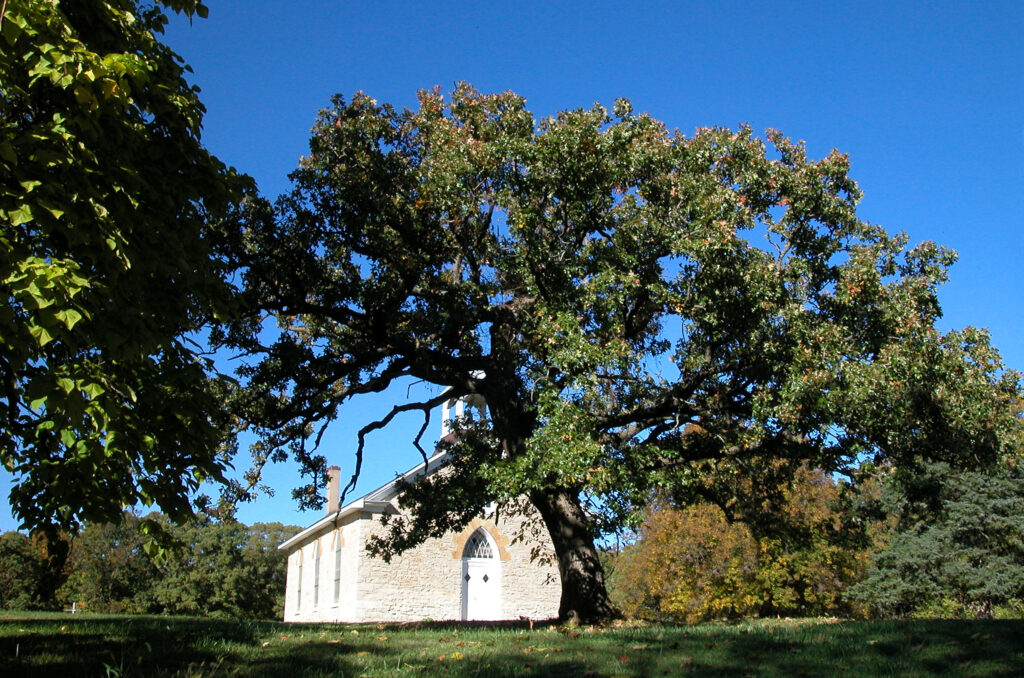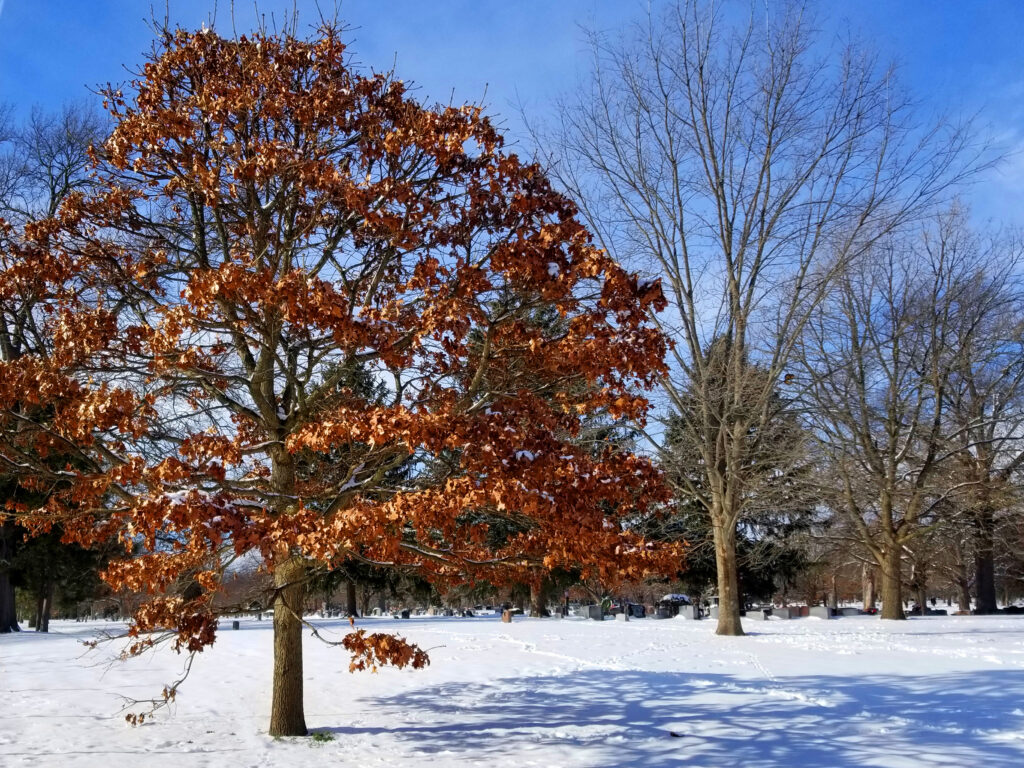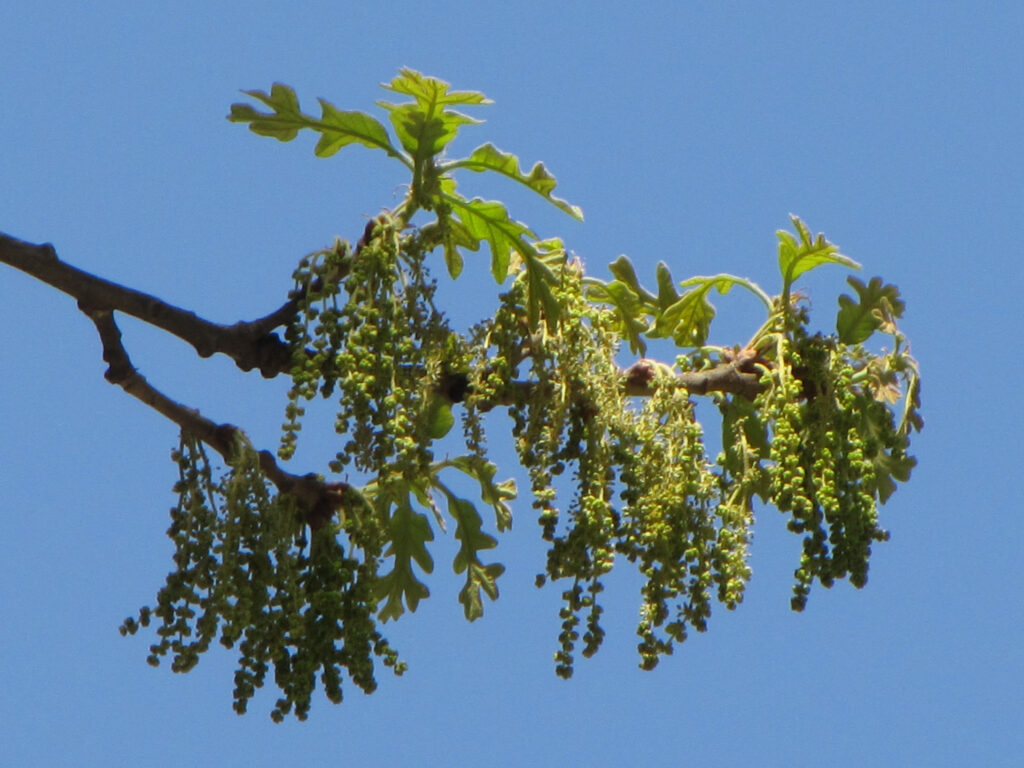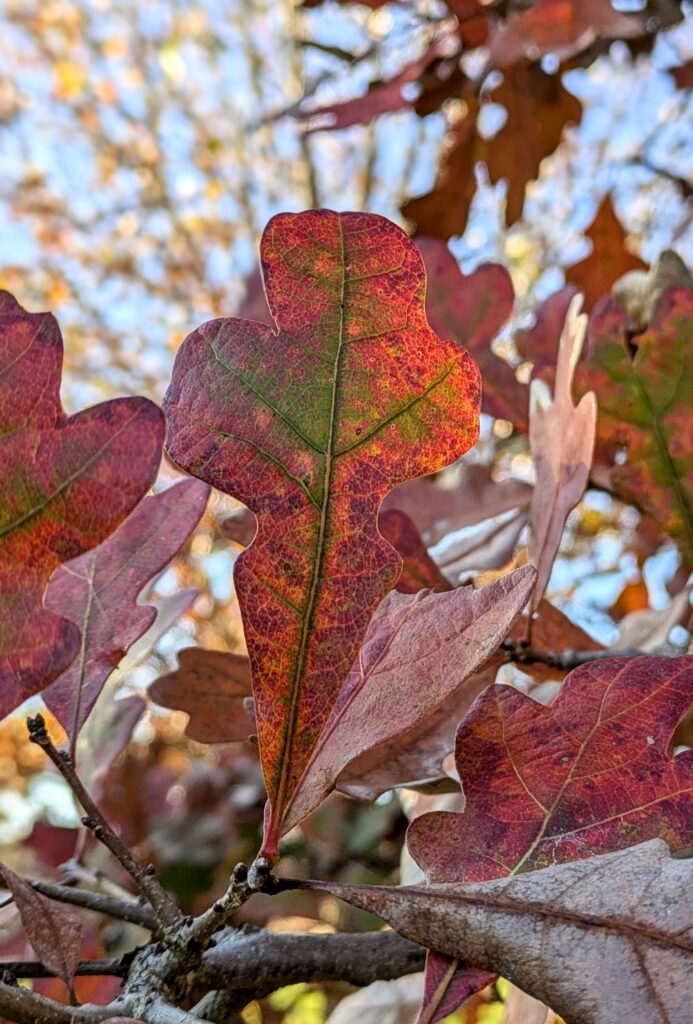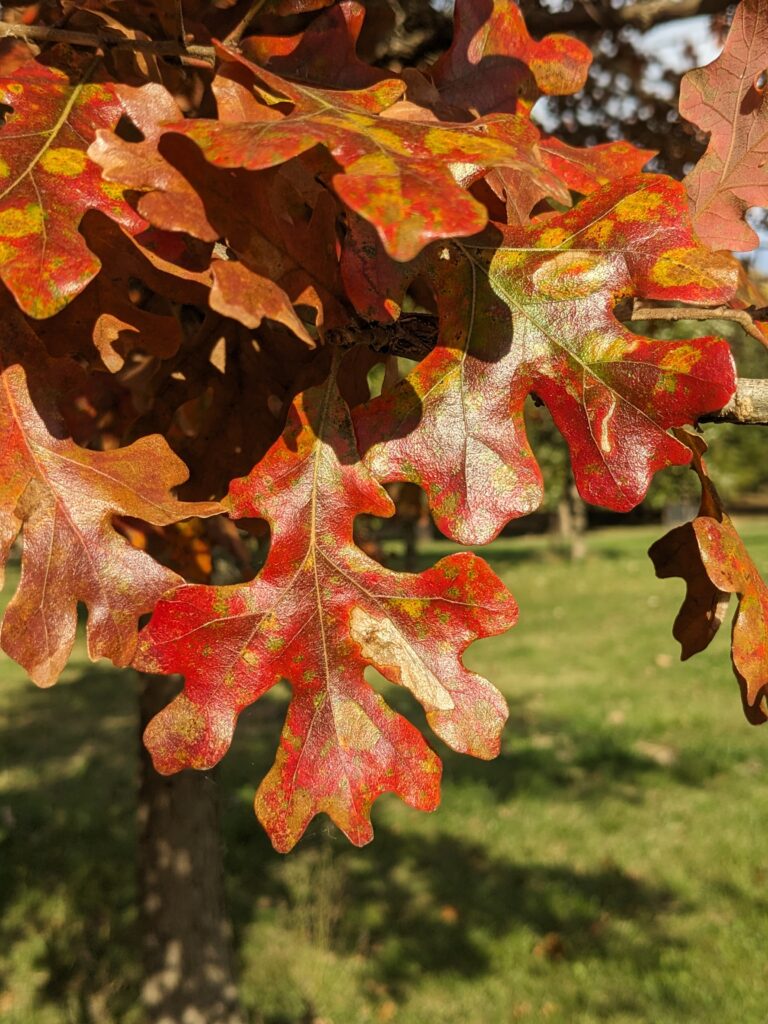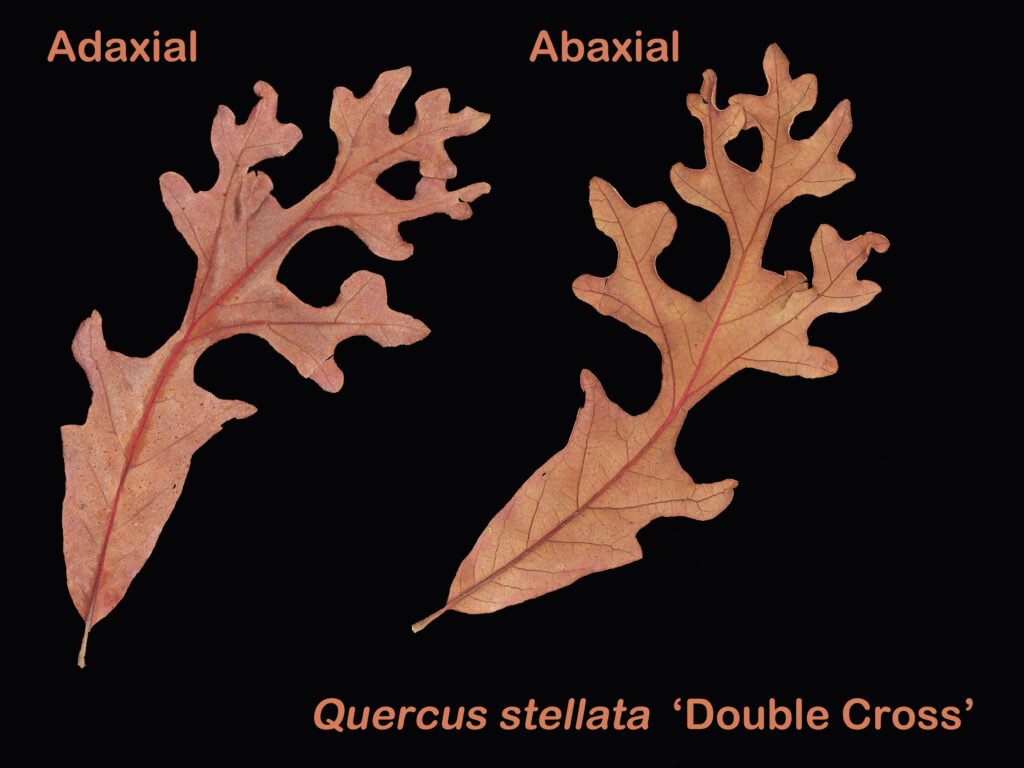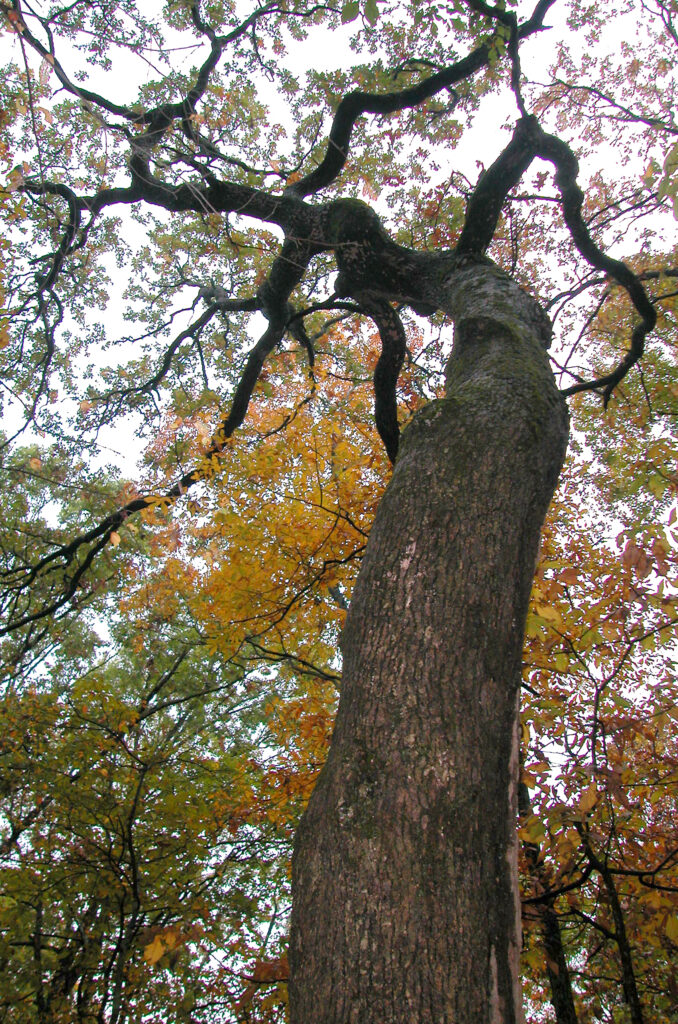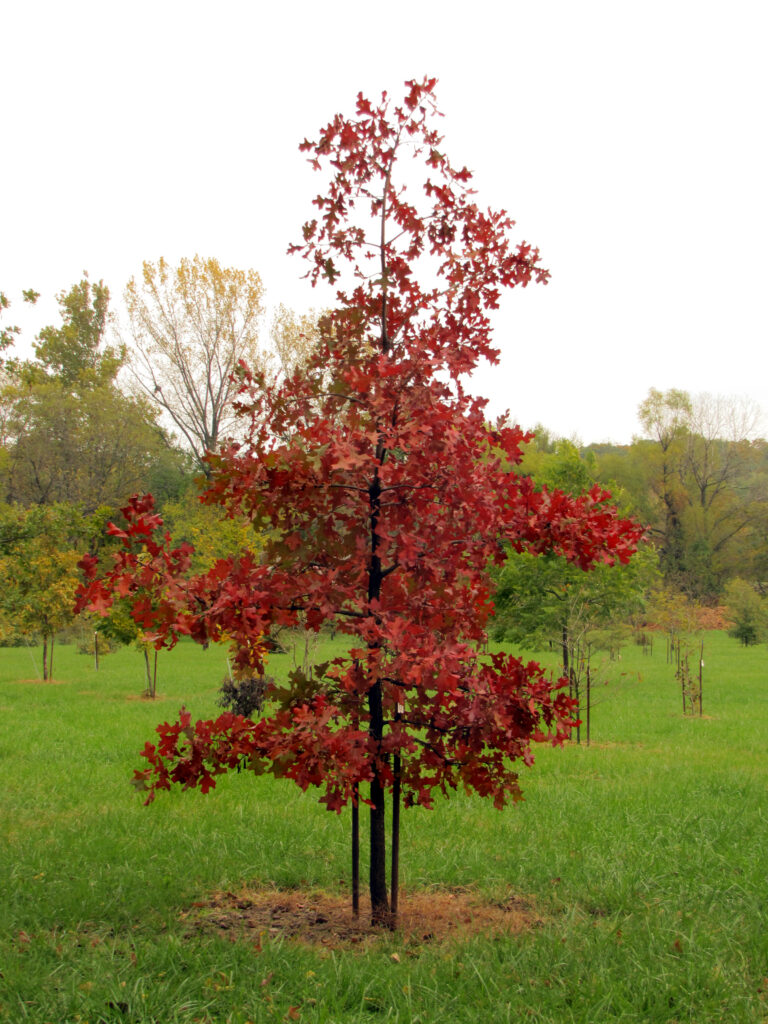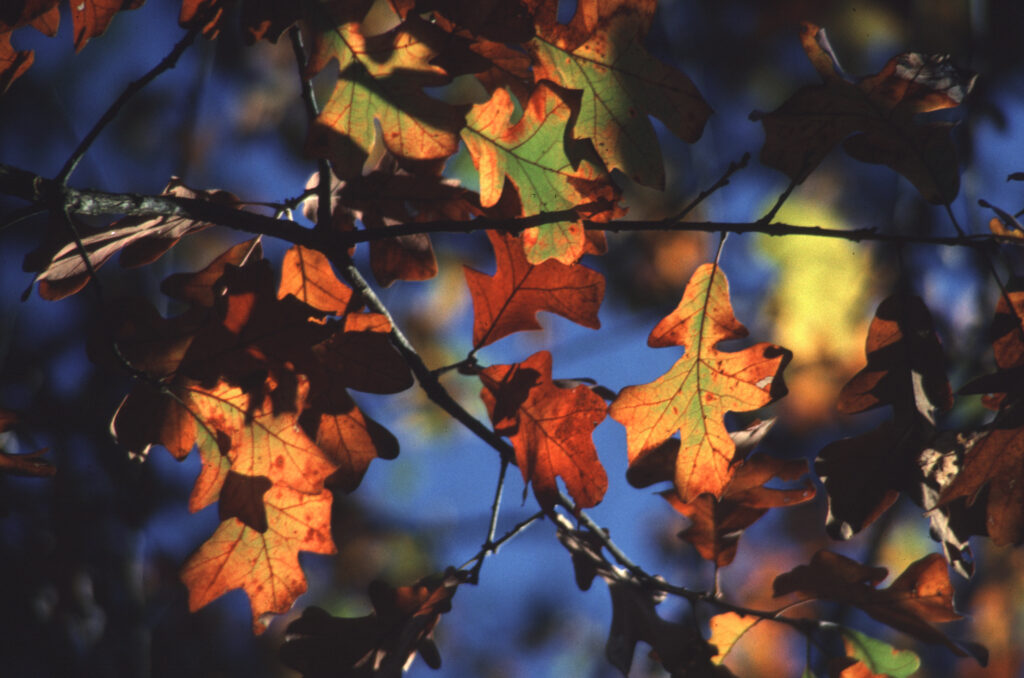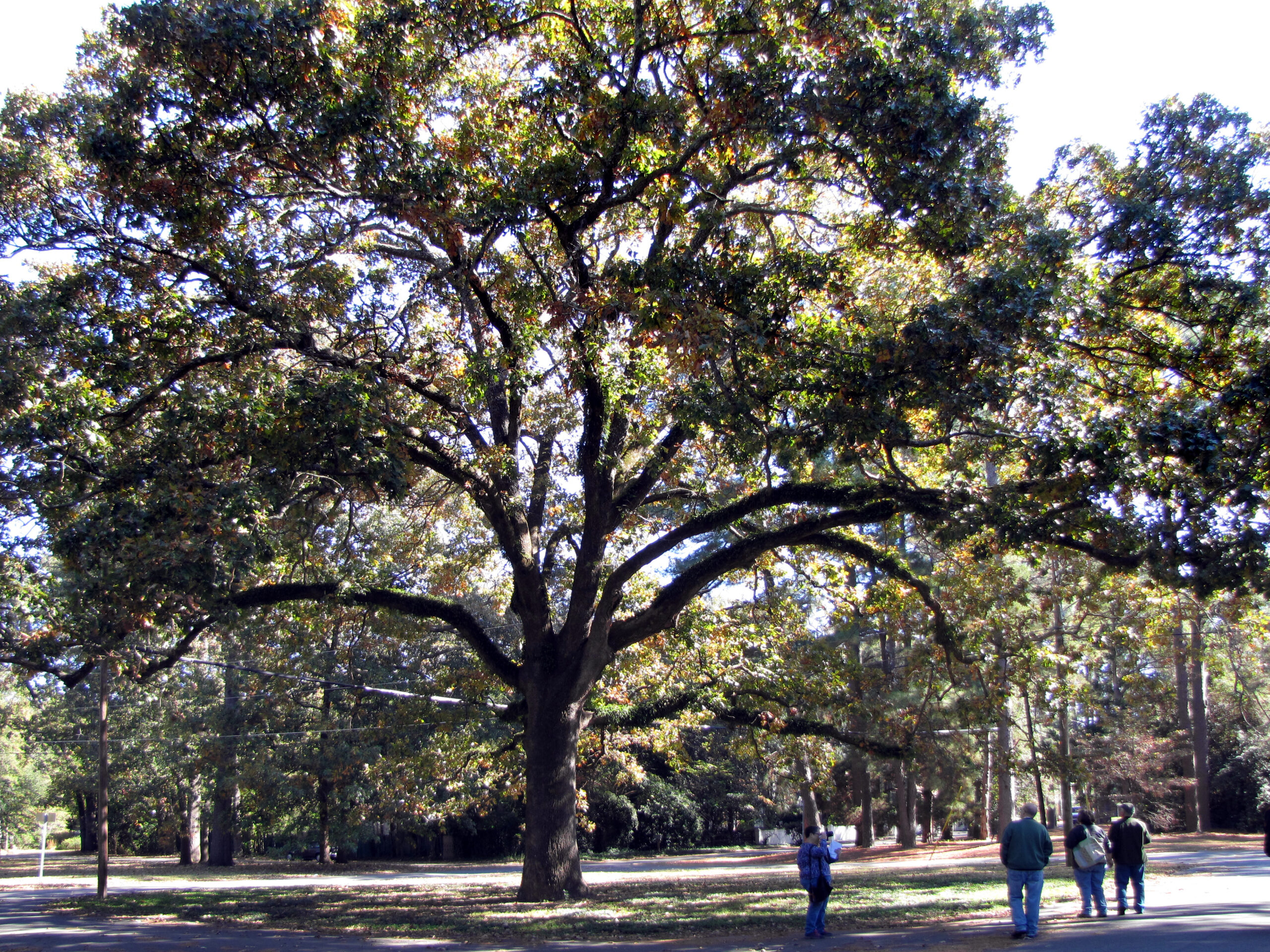
Post Oak, Quercus stellata
FEATURED TREE
Post oak (Quercus stellata) is a hardy, slow-growing tree in the white oak group, known for its resilience and stunning fall color. It thrives in poor, dry soils and grows in conditions where other trees might struggle. Although it grows slowly, focusing much of its energy on its roots that explore cracks underground for suitable soil and moisture, it is an excellent choice for urban sites when transplanted early with patience.
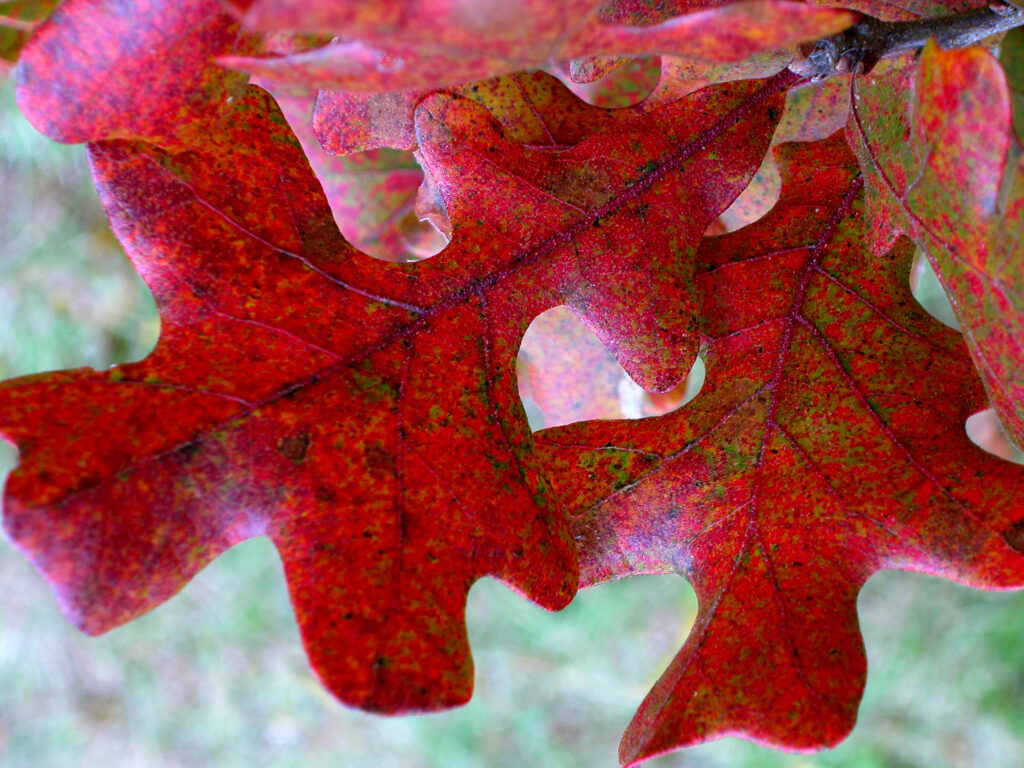
Its leaves are among the most recognizable of our native oaks, with a pair of unique spatulate lobes at the end of the leaf, though this shape can vary considerably with provenance. The leaves are usually stiff and lustrous, adapted to the dry and challenging conditions with which they have evolved. Fall color can vary, but many in our collection boast a brilliant, glossy crimson hue. Acorns are small and plentiful, making them a highly desirable food source for countless birds and small mammals.
The species is found in the Cross Timbers ecoregion of Texas and Oklahoma and as far north as southern Iowa. It’s also found in the more hospitable areas of the South, and north along much of the East coast. Our collection features seven accessions of the species as well as 14 hybrid trees that include post oak as a parent from across that range. Two of our accessioned trees were sourced from the seed of an ancient post oak located in Tulsa, gnarly and picturesque with age. The tree was used as a tribal meeting place by the Creek Nation two centuries ago, when the tree was already mature and providing a shade. Our seedlings are now nearing 20 years old, and we expect them to live for several hundred more!
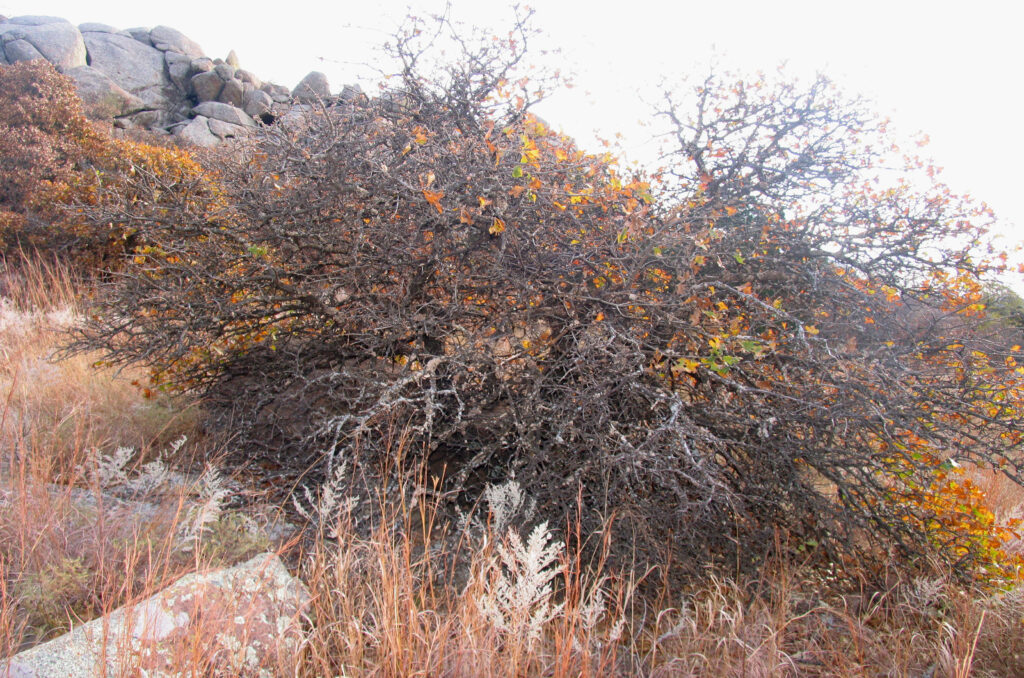
Post oak is closely related to the bottomland post oak (Quercus similis) of the deep South, the smaller sand post oak (Quercus margarettae) of the Southeast, and the globally endangered Boynton post oak (Quercus boyntonii), which grows in isolated rocky areas in the Southeast. These species are sometimes considered varieties of the same post oak. In Alabama, we explored one of the few known sites where Boynton oak grows—a barren area with thin, gritty soil over volcanic rock. We collected seeds from this site, and in our richer soil, we now have what is likely one of the largest Boynton oak specimens in existence.
Post oak readily hybridizes with other white oaks across its range. In west Texas, southwest of the Cross Timbers, post oak hybridizes with shin oak (Quercus havardii), where it forms taller clones in the sub-desert sand soils usually dominated by populations of that dwarf species that spreads vegetatively. In other areas near the edges of its range farther east it also crosses with chapman oak (Quercus chapmanii) and the rare bluff oak (Quercus austrina). We grow some of these species here, and it will be interesting to see how well they interbreed as they grow larger.
Closer to home, you might encounter the hybrid with white oak (Quercus alba) known as Fernow’s oak (Quercus ×fernowii). It is scattered but relatively widespread throughout most of the range of species overlap. We have accessioned this hybrid from a source in the Ozarks of central Missouri, where Guy’s parents once lived. In that same location, a post oak was damaged by lightning and removed. The trunk was only about a 12” in diameter but a count of the dense rings revealed the tree was approximately 200-years-old, serving as a testament to the species’ remarkable longevity and slow growth.
Less commonly, it crosses with swamp white oak (Quercus bicolor) just two counties south of our area to form Quercus ×substellata, which can be seen here as well. The two species grow in adjacent habitats but do not overlap, so these hybrids can be found half-way down the bluff above wet areas. In Kansas it crosses with bur oak (Quercus macrocarpa) to form Quercus ×guadalupensis, from which we selected our spectacular cultivar ‘Crimson Cross.’
Post oak is the go-to tree for difficult conditions, thriving where most trees would struggle—whether in barren soil, extreme heat, or drought while also tolerating seasonally waterlogged soils. Its adaptability and resilience make it the perfect choice for urban environments, and it is being honored this year as Tree of the Year by the City of Kirkwood, Missouri, where it continues to thrive and endure.
